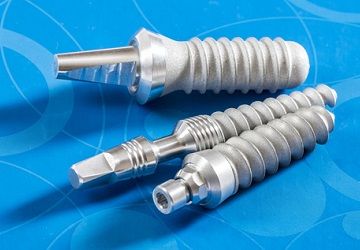Dangerous Influences During Implant Procedures and How to Avoid Them
In dentistry and medicine, man-made complications can damage more than just your ego. A recent study investigated the prevalence of human error in implant dentistry, and its conclusions may surprise some dentists. Continue below to find out more.

Misuse or failure of tools is one way to botch a simple implant procedure.
No one likes to admit their faults, but when it comes to improving the practice of implant dentistry, factoring in human errors could reduce risks and complications.
RELATED:
- Hiring an Associate? Here's How to Make It Work
- The Top and Bottom 10 Cities for Operating Efficiency
- Look for Advisors Committed to Doing No Harm
Implants are considered simple, one-and-done procedures in dentistry, but this outlook can lead to carelessness. A new study from The International Journal of Oral & Maxillofacial Implants, recognizing that complications in dentistry are usually chalked up to mechanical and biological causes, set out to demonstrate how attention to nontechnical factors can improve care and safety.
“The actual reasons for medical errors are faulty synthesis, premature closure, faulty context, errors from the use of heuristics, etc.,” researchers said in the study. “Professionals in numerous medical and paramedical specialties, including surgical oncology, anesthesiology, and veterinary medicine recognize the risk associated with ‘human factors’ and are intervening to reduce such risks.”
The following stressors and “hazardous” attitudes are causes for mistakes during procedures that may affect dentists.
Attitudes and Behaviors
Impulsive. This is described by the researchers as hasty decisions and rushing to act before thinking things through. For example, a practitioner might skip a step because they have lunch plans they are prioritizing over patient care.
Defiance. Defined as a don’t-tell-me-what-to-do mentality, a dentist may deliberately go against the advice of a colleague or subordinate, even if the patient’s safety is at stake.
Invincible. A dentist with this attitude feels he or she is impervious to mistakes and that errors only happen to others.
Macho. Marked by a feeling of superiority that can affect both male and female dentists.
Resignation. Referred to by some as a “pushover,” dentists exhibiting this pessimistic attitude bends to the whims of others and does not feel his or her actions can make a difference.
Environmental Stress Factors
Intraoperative stress. This refers to emergencies during a procedure.
Equipment problems. Missing instruments, equipment failure or inexperience with a tool.
Teamwork problems. Incompetent or inexperienced staff, language barriers, distracted or neglectful staff, interpersonal issues.
Distractions. Talking, intrusions, cell phones, etc.
Personal factors or problems. Lack of sleep, hunger, illness, emotional or physical discomfort.
Avoiding ‘Human Factors’
To err is human, but there are several steps dentists can take to counteract mistakes. The study cites two specific protocols used in aviation called Human Resource Management and Threat and Error management, which can be tweaked to suit the needs of dental practices.
“The systematic use of feedback (reporting and analysis of errors by a grouping of professionals) Is another way of making human activities safer,” the researchers said. “More and more medical specialties are taking these concepts on board.”
The best and easiest way to implement new protocol is to create procedural safety checklists. The criteria are as follows:
· Checklists must be 10 or fewer items so as not to make the process tedious and, therefore, less effective.
· Key safety items take priority.
· Pose questions to patients clearly and without risk of misinterpretation.
· Questions should not lose their meaning in translation. A good checklist is universally understood.
· Questions should also be unambiguous to staff members involved in the procedure.
· An ideal checklist is electronically formatted.
· Checklists are open to modification. As science and technology advances, so should your safety procedures.
“There is absolutely no doubt that [systematic feedback] has improved safety for practitioners and patients alike,” the researchers reported. “Implementing these approaches in the working environment is, therefore, a win-win situation for practitioners and their teams.”
Discover more Dentist’s Money Digest® news here.